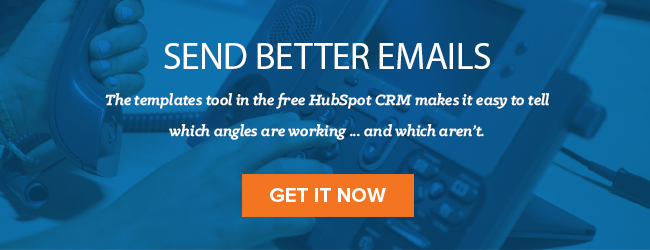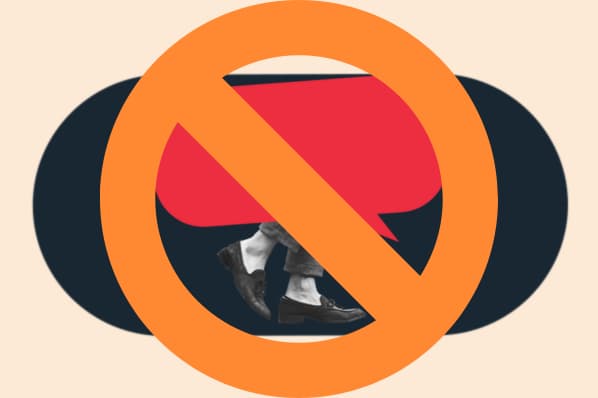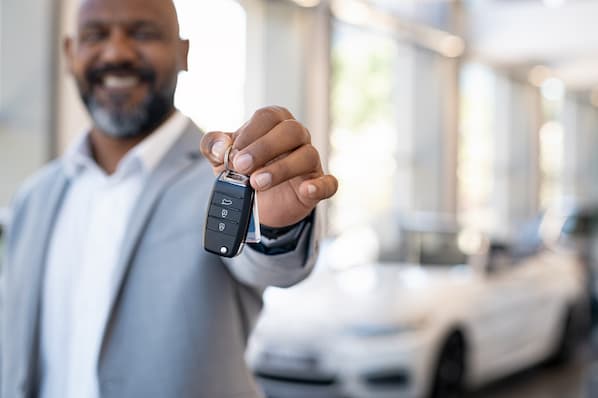As a former FBI kidnapping negotiator, Chris Voss knows how to navigate extremely tense situations, work with unpredictable personalities, and successfully broach difficult topics. As he explains in his book, “Never Split the Difference: Negotiating As If Your Life Depended On It,” these skills often allowed him to successfully trade money for lives.

With these stakes, it might seem surprising Voss wasn’t worried by hearing “no” in negotiations. But he argues “no” is one of the most powerful words you can elicit from your negotiation partner.
Why “Yes” Is Dangerous
If you’ve ever received a series of “yeses” from your prospect, only to have the deal fall apart at the final moment, you’ve seen first-hand why “yes” can be dangerous.
Voss explains there are three types of “yes” responses: Confirmations, counterfeits, and commitments.
A confirmation “yes” is an automatic response to a close-ended question. For example, if you ask your prospect, “Do you want to cut down on the hours you spend doing administrative work?”, he’ll likely say “yes” without thinking.
Don’t get too excited by a confirmation “yes.” According to Voss, “It’s mostly just simple affirmation with no promise of action.”
Counterfeit “yeses” are less benign. Your negotiation partner means “no,” yet believes saying “yes” offers the path of least resistance or an opportunity to gain an advantage.
Perhaps you ask the buyer, “Does that sound fair?” Even though he thinks the price is too high, he says “yes” to avoid haggling right now. You’ve gotten a positive response -- but the deal will end up stalling.
A commitment “yes” is authentic. It leads to action and is “the ‘yes’ at the table that ends with a signature on the contract,” Voss writes.
If you chase commitments from the outset of the negotiation, you’ll usually end up getting confirmations and counterfeits versions instead.
Starting with the “no” will generate far better results.
What ‘No’ Means (It’s Not What You Think)
What does “no” truly signify? It rarely means, “After a careful, thorough analysis of the situation, I’ve decided the rational response is negative.”
“‘No’ is often a decision, frequently temporary, to maintain the status quo,” Voss writes. “Change is scary, and ‘No’ provides protection from that scariness.”
“No” might translate to:
- “I need feedback from someone else.”
- “I’m not ready yet.”
- “I’m not sure it’s in my price range.”
- “I want something different.”
- “I need more information.”
“Nos” are reversible, not permanent. They’re an excellent way to jumpstart the negotiation -- once your partner feels comfortable, he’s far more willing to engage in the conversation and share his reservations.
How to Get a “No”
Jim Camp, author of "Start With No," advises negotiators to begin by giving their partners “the right to veto.”
There are several ways to do this. Voss suggests making a statement you know is false. If the buyer cares about avoiding hazards at all costs, you could say, “It seems like you’re not interested in the version with the most safety functions.”
They’re compelled to respond, “No, I am,” which makes them comfortable correcting you.
Alternatively, ask your prospect what they’re not looking for. You might say, “Tell me about the features you don’t want,” or “Which terms would you reject?”
You’ll uncover potential issues, show them you’re on their side, and put them at ease.
Finally, you can solicit “nos” by flipping your “yes-oriented” questions. Rather than asking, “Is it a good idea if we did X?”, ask, “Is it a terrible idea if we did X?”
Here are four more prompts:
- “Would it be awful if … ”
- “Could you ever imagine doing … ”
- “Is it ridiculous to suggest … ”
- “Do you find the thought of Y completely ludicrous?”
Use extreme language -- like “awful,” “ridiculous,” and “terrible” -- to show your prospect saying “no” would be reasonable and even anticipated.
These strategies also reveal which negotiations will ultimately go nowhere. If the buyer refuses to say “no,” they're unsure of their priorities, confused, or manipulative. Productive negotiations require honesty on both sides, so walk away from prospects who aren’t transparent.
Test Your “Yeses”
Once you’ve successfully elicited a “no” from your prospect, you may be tempted to accept every “yes” as legitimate. After all, you’ve shown it’s okay to reject your request or say you’re wrong.
But sometimes you need to reinforce this idea. If the buyer says “yes” but sounds skeptical or unsure -- or your instincts tell you he’s holding back -- test his response to make sure it’s true.
To do so, comment on his reluctance, then go silent and wait for his response.
Here’s some sample dialogue:
Salesperson: "I know one of your priorities was insuring the product during transit. Our customers usually cover this cost, but we’re happy to do so in this case. In exchange, are you open to establishing a 5% interest rate per month for any deferred payments?"
Prospect: "Yes, I think we can agree to that. I’ll have to check with my team though."
Salesperson: "You seem a little hesitant."
Prospect: "To be honest, 5% sounds excessively high."
Other ways to phrase your comment include:
- “You said ‘yes,’ but I sense you have some reservations.”
- “You sound unsure.”
- “That’s how I sound when my [five-year-old offers me one of her culinary creations, friend invites me to his performance art show, in-laws ask if I read the book they gave me last year].” (A humorous, self-deprecating reply can work wonders.)
“No” doesn’t have to be the final word in a conversation. On the contrary, it’s an incredibly powerful way to establish trust and transparency. Next time you’re negotiating, don’t avoid “nos” -- seek them out.










